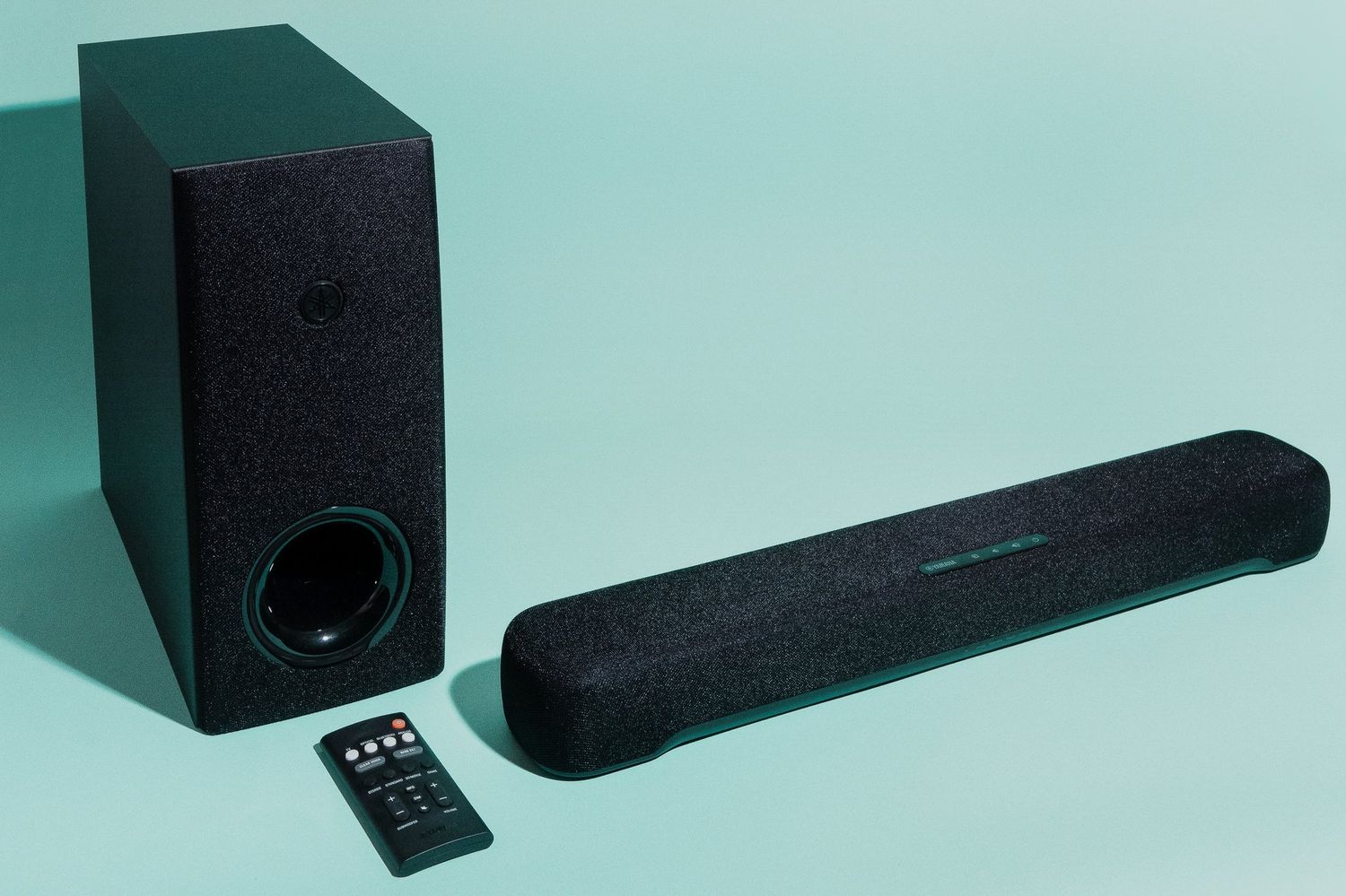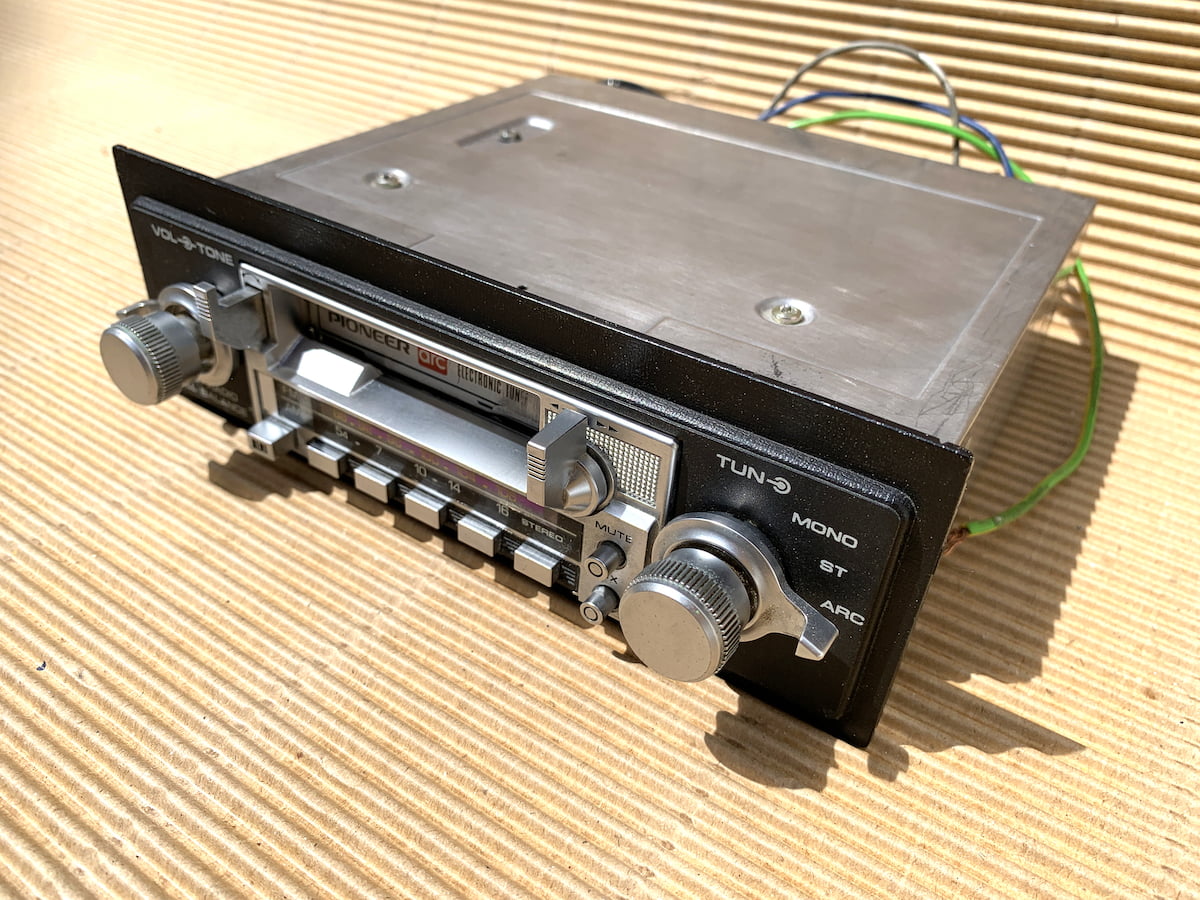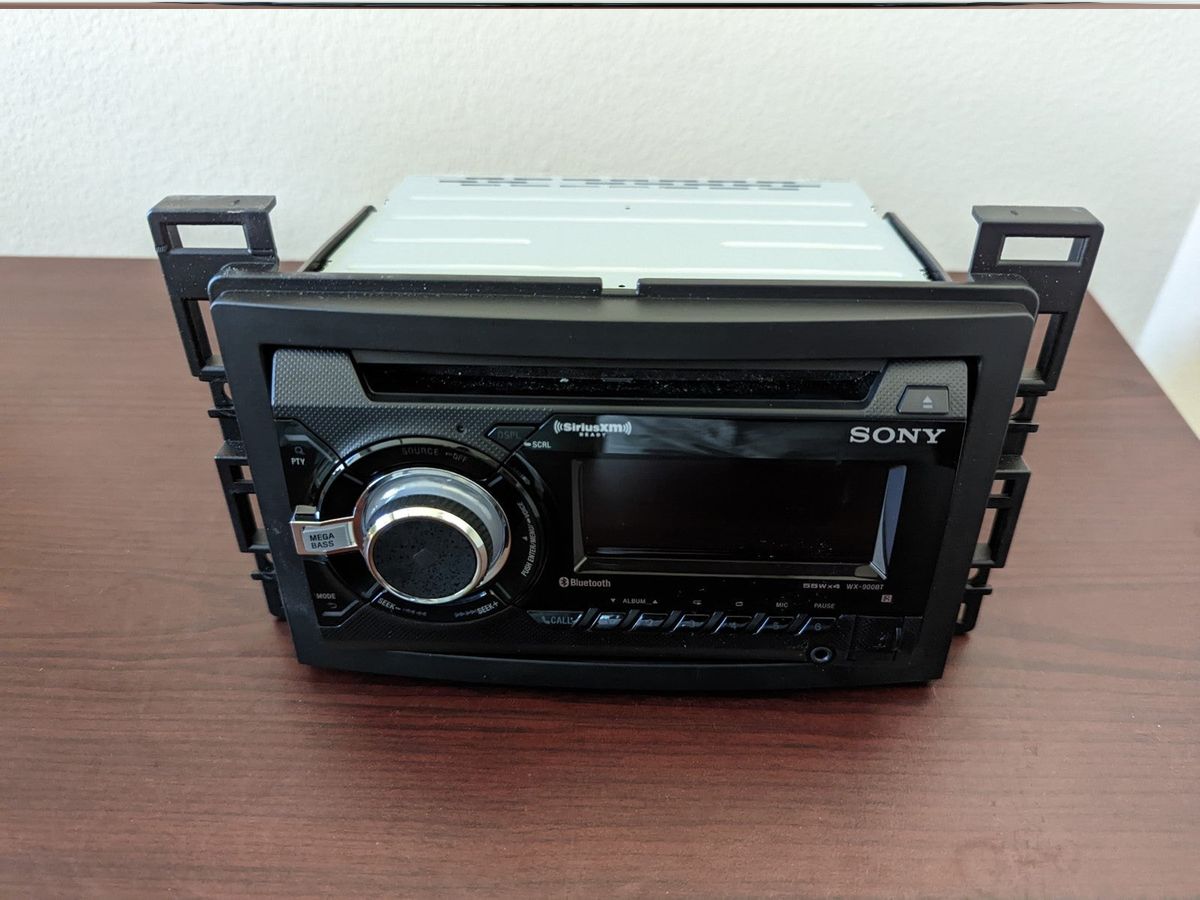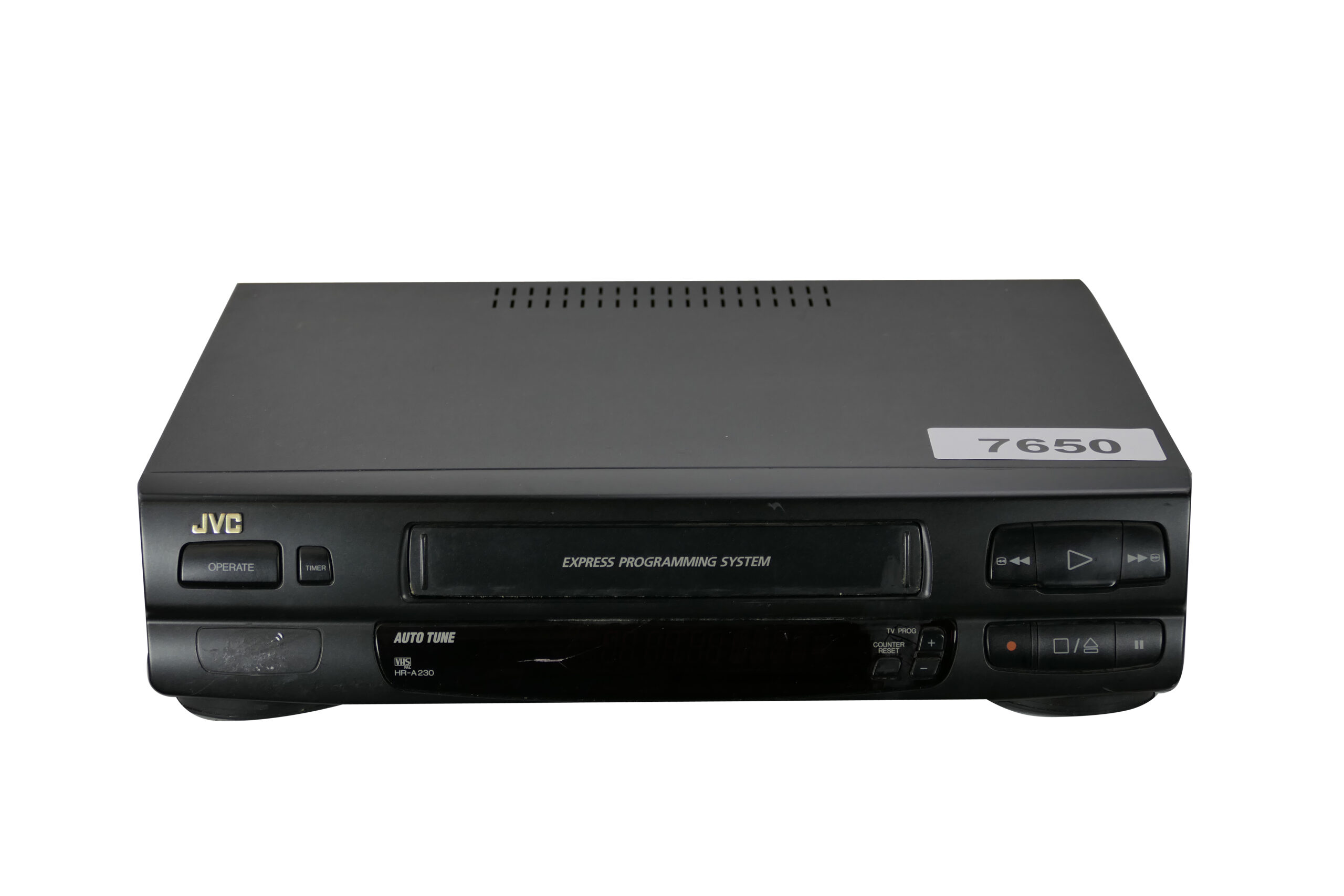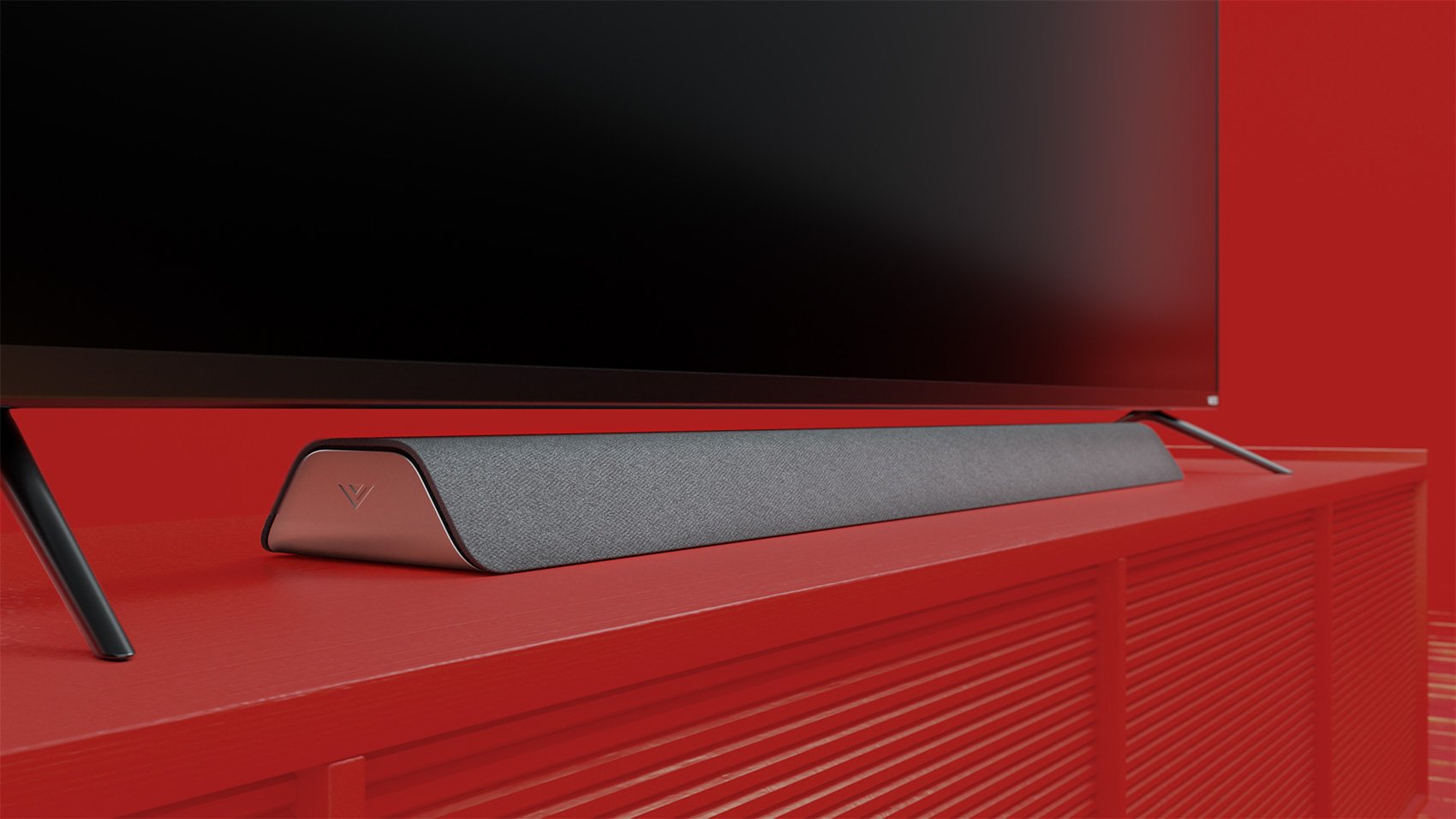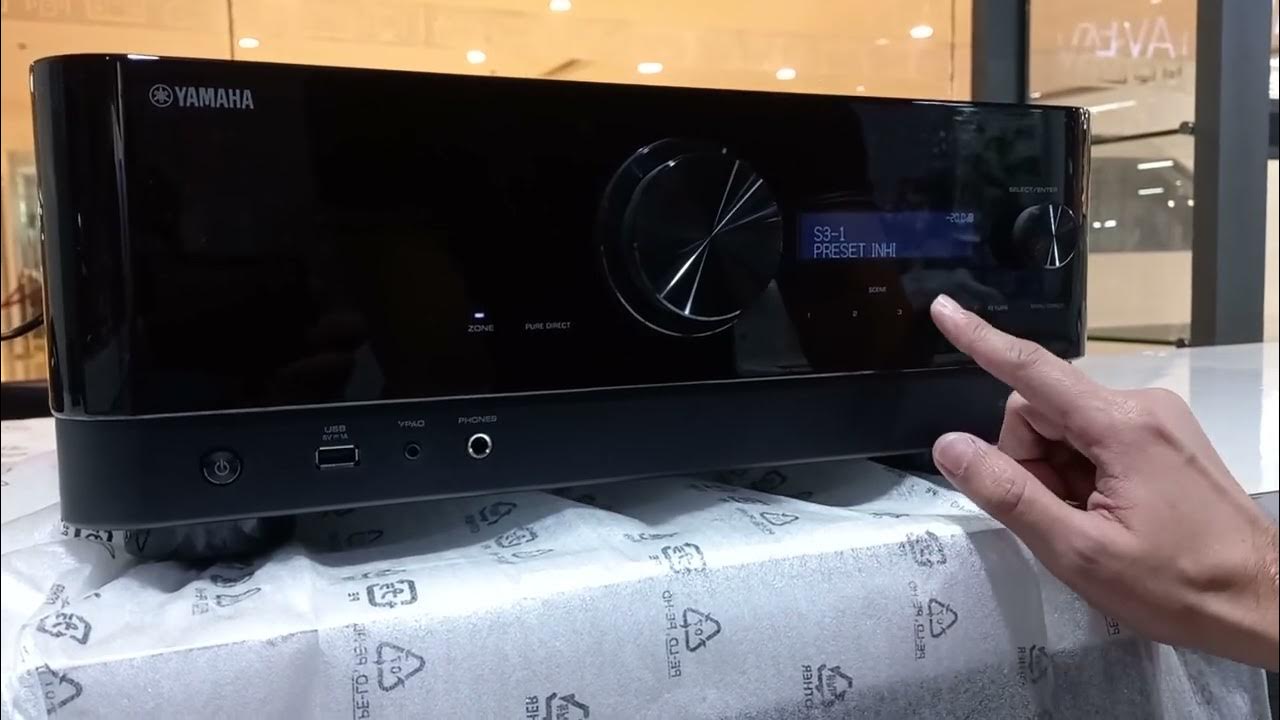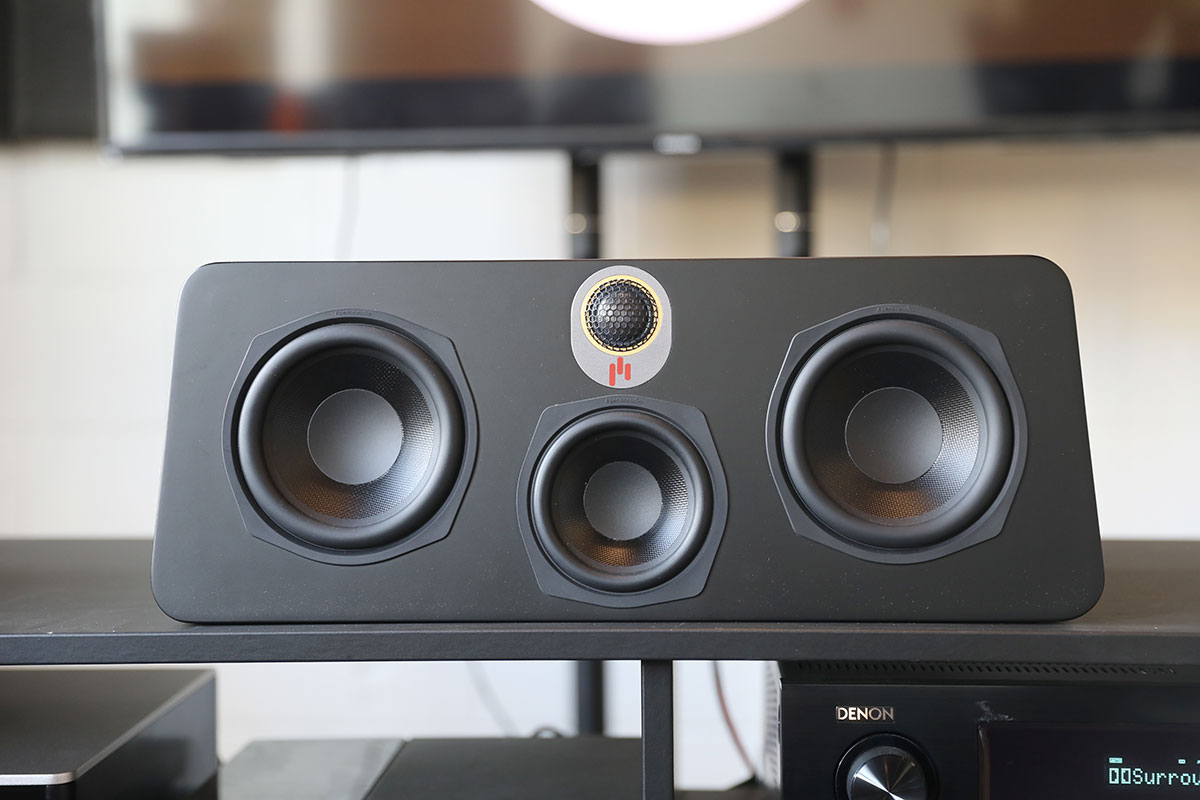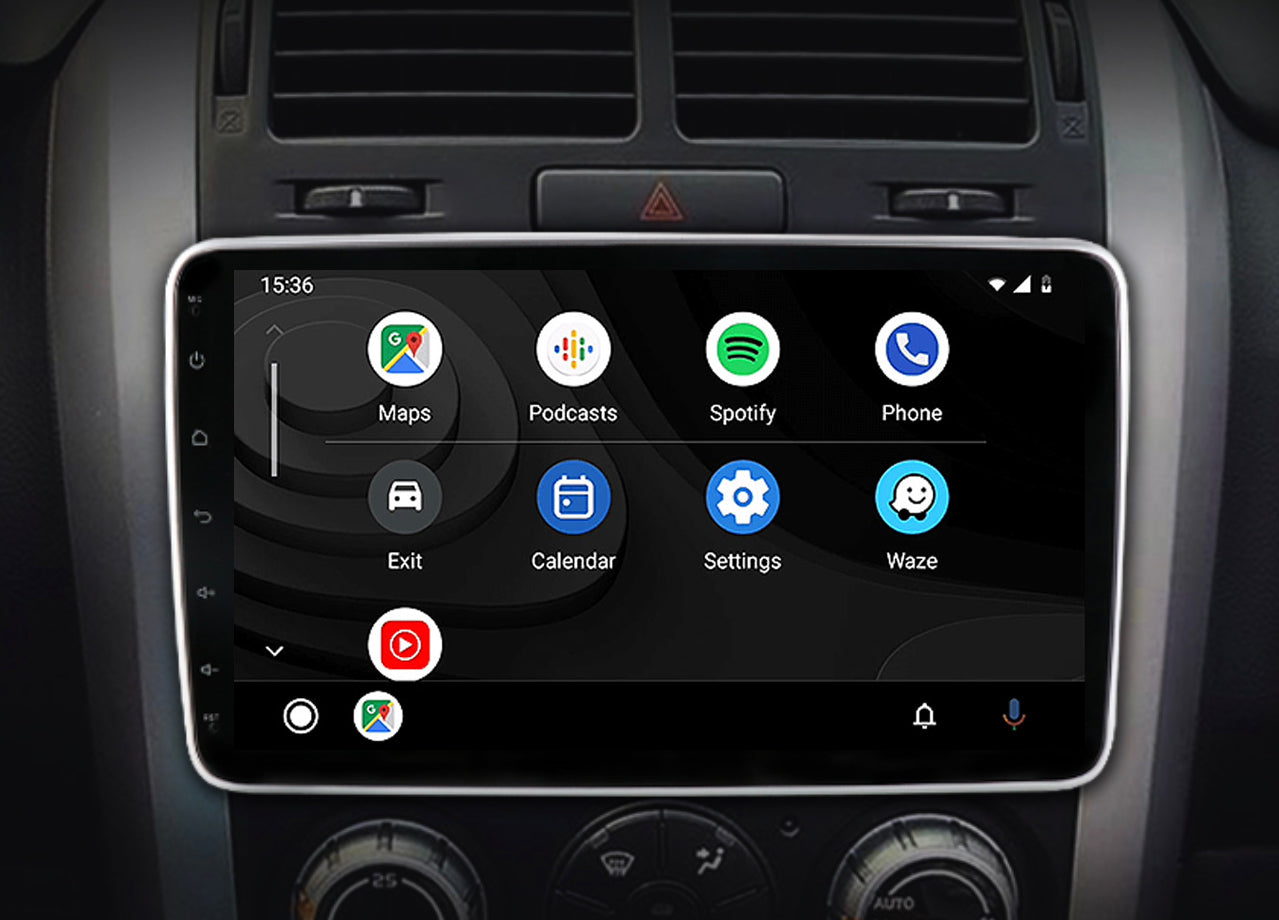Home>Production & Technology>Stereo>Why Does My Car Stereo Keep Resetting


Stereo
Why Does My Car Stereo Keep Resetting
Published: November 25, 2023
Learn why your car stereo keeps resetting and how to fix it. Get expert tips and troubleshooting advice for stereo issues. Don't let a malfunctioning stereo ruin your driving experience.
(Many of the links in this article redirect to a specific reviewed product. Your purchase of these products through affiliate links helps to generate commission for AudioLover.com, at no extra cost. Learn more)
Table of Contents
- Introduction
- Common Causes of Car Stereo Resetting
- Improper Wiring
- Voltage Fluctuations
- Faulty Fuse or Ground Connection
- Software or Firmware Issues
- Overheating or Cooling Problems
- Impact or Vibration Damage
- Troubleshooting and Fixing the Issue
- Checking the Wiring
- Testing the Voltage
- Inspecting the Fuse and Ground Connection
- Updating or Resetting the Software/Firmware
- Ensuring Proper Cooling and Addressing Overheating
- Securing the Stereo to Minimize Impact Damage
- Conclusion
Introduction
Have you ever experienced the frustration of your car stereo continuously resetting while you’re driving? It can be quite annoying to constantly have to adjust the settings and re-connect your phone or music player. Not only does it disrupt your listening experience, but it can also be a safety concern as it diverts your attention from the road.
The good news is that you’re not alone in facing this issue. Many car owners have encountered their car stereo resetting unexpectedly. The reasons behind this problem can vary, from simple wiring issues to more complex software or firmware problems. In this article, we will explore the common causes of a car stereo resetting, and provide you with troubleshooting steps to help you resolve the issue.
It is important to note that car stereo models and brands can differ, so the solutions provided may not be universally applicable to all scenarios. However, understanding the common causes can give you a better idea of what might be going wrong with your car stereo and guide you in finding an appropriate solution.
So, let’s dive in and explore the potential reasons behind why your car stereo keeps resetting, and learn how to troubleshoot and fix this frustrating issue.
Common Causes of Car Stereo Resetting
There are several common causes that can lead to your car stereo continuously resetting. Identifying these causes is the first step in troubleshooting and resolving the issue. Let’s take a closer look at each of these causes:
- Improper Wiring: One of the most common reasons for a car stereo to reset is improper wiring. If the wiring connections are loose or not properly secured, it can lead to intermittent power supply to the stereo, causing it to reset randomly. Ensure that all the wiring connections behind the stereo are tightly connected and secure.
- Voltage Fluctuations: Fluctuations in the electrical voltage of your car can also cause the stereo to reset. This can happen due to issues with the car’s battery or alternator. An unstable power supply can disrupt the functioning of the stereo and cause it to reset. Consider getting the battery and alternator checked by a professional if you suspect voltage fluctuations.
- Faulty Fuse or Ground Connection: A blown fuse or a faulty ground connection can also be a culprit behind the car stereo resetting. The fuse protects the stereo from power surges and short circuits, so if it blows, the stereo may reset as a safety measure. Similarly, a loose or damaged ground connection can cause electric current to fluctuate, leading to random resets. Check the fuse and ground connection, and replace or repair them if necessary.
- Software or Firmware Issues: Like any electronic device, car stereos have software or firmware that controls their operation. Outdated or corrupted software/firmware can cause the stereo to behave erratically, including frequent resetting. Check if there are any software or firmware updates available for your stereo model and try updating it to see if it resolves the issue.
- Overheating or Cooling Problems: Car stereos can overheat due to excessive usage or insufficient ventilation. Overheating can cause the stereo to reboot as a protective measure. Similarly, extreme cold temperatures can also affect the functioning of the stereo. Ensure that the stereo is adequately cooled by providing proper ventilation and avoid exposing the car to extreme temperature conditions.
- Impact or Vibration Damage: Vibrations or impacts from potholes, speed bumps, or rough terrains can potentially damage the internal components of the car stereo. This damage can cause the stereo to reset intermittently. Consider securing the stereo properly and using shock-absorbing materials to minimize the impact of vibrations.
These are some of the common causes of a car stereo resetting. It is important to address these underlying issues to prevent the inconvenience of continuous resets. In the following sections, we will discuss troubleshooting steps that you can take to fix the problem based on these causes.
Improper Wiring
Improper wiring is a common cause of a car stereo resetting. Loose or improperly connected wires can result in intermittent power supply to the stereo, leading to frequent resets. Here are some steps you can follow to address potential wiring issues:
- Check the connections: Start by inspecting the wiring connections behind the car stereo. Make sure all the wires are tightly connected and well-secured. If you notice any loose or disconnected wires, reconnect them properly.
- Inspect the wiring harness: The wiring harness connects the car stereo to the car’s electrical system. Check the wiring harness for signs of damage or wear. If you notice any frayed wires, breaks, or corrosion, it’s important to replace the harness to ensure a proper and secure connection.
- Consider professional help: If you’re unfamiliar with car wiring or unsure about the correct connections, it’s recommended to seek professional assistance. An experienced car audio technician can help you identify and rectify any wiring issues, ensuring that all connections are secure and properly configured.
By addressing any improper wiring, you can eliminate one potential cause of your car stereo resetting. However, if the issue persists, it’s important to explore other possible causes such as voltage fluctuations or software/firmware problems, which we will discuss in the following sections.
Voltage Fluctuations
Voltage fluctuations in your car’s electrical system can cause your car stereo to reset unexpectedly. These fluctuations can occur due to issues with the car’s battery or alternator. Here are some steps you can take to address potential voltage fluctuation problems:
- Check the battery: Start by checking the condition of your car’s battery. A weak or faulty battery can result in inconsistent power supply to the stereo, causing it to reset. Inspect the battery for any visible signs of damage or corrosion. If necessary, get the battery tested and consider replacing it if it’s no longer functioning optimally.
- Inspect the alternator: The alternator is responsible for charging the battery and providing power to the car’s electrical system. If the alternator is not functioning correctly, it can lead to voltage fluctuations. Have a professional test the output of the alternator to ensure it’s generating the right amount of power. If there are issues with the alternator, it may need to be repaired or replaced.
- Stabilize the power supply: In some cases, adding a voltage stabilizer or regulator to your car’s electrical system can help mitigate voltage fluctuations. These devices help maintain a consistent voltage level, reducing the chances of your car stereo resetting due to power variations.
Addressing voltage fluctuations in your car’s electrical system can help resolve the issue of your car stereo resetting. However, if the problem persists, it’s important to explore other potential causes such as faulty fuses or ground connections, software/firmware issues, or overheating problems, which we will discuss in the following sections.
Faulty Fuse or Ground Connection
A faulty fuse or ground connection can be a common cause of a car stereo resetting. A blown fuse or a loose/damaged ground connection can disrupt the power supply to the stereo, leading to intermittent resets. Here are some steps you can take to address these issues:
- Check the fuse: Locate the fuse box in your car and find the fuse associated with the car stereo. Inspect the fuse for any signs of damage, such as a blown fuse or a broken filament. If you find a faulty fuse, replace it with a new one of the same rating. This will help ensure a proper power supply to the stereo.
- Inspect the ground connection: The ground connection is responsible for completing the electrical circuit in your car’s stereo system. A loose or damaged ground connection can lead to disruptions in power supply and cause the stereo to reset. Ensure that the ground connection is securely attached and free from corrosion or damage. Clean the connection if necessary and tighten it to ensure a proper electrical connection.
- Consider a ground loop isolator: In some cases, a ground loop isolator can help eliminate noise and interference caused by ground connections. This device can be installed between the stereo and the car’s electrical system, providing a clean ground connection and minimizing the chances of the stereo resetting.
By checking the fuse and inspecting the ground connection, you can resolve any potential issues related to faulty fuses or ground connections. However, if the problem persists, it’s important to explore other potential causes such as software/firmware issues, overheating problems, or impact/vibration damage, which we will discuss in the following sections.
Software or Firmware Issues
Software or firmware issues can also contribute to a car stereo resetting. Just like any electronic device, car stereos rely on software or firmware to operate smoothly. Outdated or corrupted software/firmware can cause the stereo to behave erratically and reset unexpectedly. Here are steps you can take to address potential software or firmware issues:
- Check for updates: Visit the manufacturer’s website or contact their customer support to check if there are any software or firmware updates available for your car stereo model. Updating the software or firmware can often resolve bugs or glitches that may be causing the resetting issue.
- Reset the stereo: Some car stereo models have a reset function that allows you to restore the default settings. Check your stereo’s manual or contact the manufacturer to find out how to perform a reset. This can help clear any temporary software glitches that may be causing the resets.
- Reinstall the software or firmware: If updating didn’t resolve the issue, it may be necessary to reinstall the software or firmware. Contact the manufacturer for guidance on how to properly reinstall the software or firmware on your specific car stereo model.
- Consult a professional: If you’re uncomfortable or unsure about updating or reinstalling the software or firmware, it’s best to consult a professional car audio technician. They will have the expertise and tools to handle the process correctly and minimize the risk of further issues.
By addressing software or firmware issues, you can significantly reduce the likelihood of your car stereo resetting. However, if the problem continues, it’s important to explore other potential causes such as voltage fluctuations, overheating problems, or impact/vibration damage, which we will discuss in the following sections.
Overheating or Cooling Problems
Overheating or cooling problems can contribute to your car stereo resetting unexpectedly. Excessive heat or insufficient cooling in the stereo’s environment can cause it to malfunction and reset as a protective measure. Here are some steps you can take to address potential overheating or cooling problems:
- Ensure proper ventilation: Check if there is adequate airflow around your car stereo. Make sure there are no obstructions blocking the vents or air circulation. If necessary, consider repositioning the stereo or adjusting the car’s interior components to improve ventilation.
- Avoid extreme temperatures: Extreme hot or cold temperatures can impact the performance of your car stereo. Try to park your car in shaded areas during hot weather to reduce heat buildup. In colder temperatures, allow the car to warm up sufficiently before turning on the stereo to prevent any potential issues.
- Add cooling accessories: To further address overheating, you can consider adding cooling accessories such as fans or heat sinks to help dissipate heat from the stereo. These accessories can help regulate the temperature and prevent overheating-related resets.
- Regular maintenance: Perform regular maintenance checks on your car’s cooling system, including the radiator, coolant levels, and fan operation. If any issues are detected, have them addressed by a qualified technician to ensure proper cooling of the car’s electrical components.
By addressing overheating or cooling problems, you can minimize the chances of your car stereo resetting due to temperature-related issues. However, if the problem persists, it’s important to explore other potential causes such as impact/vibration damage or other electrical issues, which we will discuss in the following sections.
Impact or Vibration Damage
Impact or vibration damage can be a significant factor behind your car stereo continuously resetting. Vibrations from uneven roads, potholes, or rough terrains can cause internal components of the stereo to become loose or damaged, leading to frequent resets. Here are steps you can take to address potential impact or vibration damage:
- Secure the stereo: Ensure that your car stereo is securely mounted in its designated location. Tighten any loose screws or mounting brackets that hold the stereo in place. This can help minimize the impact of vibrations and reduce the chances of internal damage leading to resets.
- Use shock-absorbing materials: Consider using shock-absorbing materials, such as foam pads or rubber grommets, to minimize the effects of vibrations on your car stereo. These materials can act as cushions and help absorb shocks, protecting the internal components from damage.
- Check for loose connections: Regularly inspect the wiring connections behind the car stereo for any signs of looseness or disconnection caused by vibrations. If you notice any, tighten them securely to ensure a stable electrical connection.
- Drive cautiously: Be mindful of road conditions and drive cautiously to minimize exposure to excessive impacts or vibrations. Avoid speeding over rough terrains and potholes whenever possible.
By addressing impact or vibration damage, you can reduce the likelihood of your car stereo resetting due to the external forces. However, if the problem persists, it’s important to explore other potential causes such as faulty wiring, voltage fluctuations, software/firmware issues, or overheating problems, which we have discussed in the previous sections.
Troubleshooting and Fixing the Issue
Experiencing a car stereo continuously resetting can be frustrating, but there are steps you can take to troubleshoot and resolve the issue. Here is a summary of the troubleshooting steps we’ve discussed in the previous sections:
- Checking the wiring: Inspect the wiring connections behind the car stereo and ensure they are tightly connected and secure.
- Testing the voltage: Check the battery and alternator to make sure there are no voltage fluctuations. Consider getting them tested or replacing them if necessary.
- Inspecting the fuse and ground connection: Check the fuse associated with the car stereo and ensure it is not blown. Inspect the ground connection and clean or tighten it if required.
- Updating or resetting the software/firmware: Check for any available software or firmware updates for your car stereo and install them. If the issue persists, consider performing a reset or reinstalling the software/firmware.
- Ensuring proper cooling: Check for proper ventilation around the car stereo and avoid extreme temperatures. Consider using cooling accessories if necessary.
- Securing the stereo: Ensure that the car stereo is securely mounted and use shock-absorbing materials to minimize the impact of vibrations.
It’s important to note that while these troubleshooting steps can often resolve the issue, they may not be applicable to all scenarios. If the problem persists or if you are unsure about performing the troubleshooting steps, it is recommended to seek professional assistance from a car audio technician. They can diagnose the specific issue and provide the most appropriate solution for your car stereo.
By following the troubleshooting steps and addressing the underlying causes, you can restore your car stereo’s functionality and eliminate the frustration of continuous resets. Remember to perform regular maintenance checks and stay vigilant to prevent future issues from arising.
Checking the Wiring
One of the first steps to troubleshoot a continuously resetting car stereo is to check the wiring connections behind the stereo. Improper or loose wiring can result in intermittent power supply to the stereo, causing it to reset frequently. Here are steps you can take to check the wiring:
- Inspect the connections: Start by visually inspecting the wiring connections behind the car stereo. Look for any loose or disconnected wires. Ensure that all the connections are tightly connected and properly secured.
- Tighten the connections: If you find any loose connections, use a suitable tool, such as a screwdriver, to tighten them securely. Make sure to give each connection a gentle tug to check for any movement or instability.
- Check for damaged wires: Inspect the wiring for any signs of damage, such as frayed wires, cuts, or exposed insulation. These can interfere with the proper flow of electricity and cause the stereo to reset. Replace or repair any damaged wires as necessary.
- Verify the harness: The wiring harness connects the car stereo to the car’s electrical system. Ensure that the harness is in good condition and free from any damage or wear. If you notice any issues, consider replacing the harness to ensure a secure and reliable connection.
- Consider professional help: If you are unfamiliar with car wiring or unsure about the correct connections, it is recommended to seek professional assistance. An experienced car audio technician can help you identify any wiring issues and ensure that all connections are secure and properly configured.
By checking the wiring connections, you can eliminate the possibility of loose or improper connections as the cause of your car stereo resetting. However, if the problem persists, it is important to explore other potential causes such as voltage fluctuations, faulty fuses or ground connections, software/firmware issues, or overheating problems, which we have discussed in the previous sections.
Testing the Voltage
Voltage fluctuations in your car’s electrical system can be a reason for your car stereo to constantly reset. Instability in the power supply may result from issues with the car’s battery or alternator. To troubleshoot voltage-related problems, follow these steps:
- Check the battery: Examine your car’s battery for any signs of damage, such as leaks or corrosion. Ensure that the battery terminals are clean and tightly connected. Consider getting the battery tested to determine its voltage and health. If the battery is weak or faulty, it may not provide a steady power supply to the stereo, leading to resets.
- Inspect the alternator: The alternator is responsible for charging the battery and maintaining a stable electrical system. If the alternator is malfunctioning or failing, it can cause voltage fluctuations. Have a professional test the alternator’s output to determine if it is generating the correct voltage. If the alternator is faulty, it may need to be repaired or replaced.
- Verify the voltage regulators: Voltage regulators help stabilize the electrical voltage within your car’s system. If the regulators are faulty, they may cause fluctuations in voltage. It is recommended to have a professional inspect these regulators to ensure they are functioning properly and providing a consistent voltage to the car stereo.
- Consider a voltage stabilizer: Installing a voltage stabilizer or regulator in your car’s electrical system can help mitigate fluctuations in voltage. These devices ensure a steady supply of power to the stereo and minimize the chances of resets caused by voltage irregularities. Consult with a professional for assistance in selecting and installing the appropriate stabilizer for your car.
- Seek professional assistance: If you are uncertain or uncomfortable performing voltage tests, it is advisable to consult a professional car electrician or audio technician. They will have the necessary tools and expertise to accurately measure and diagnose any voltage-related issues.
By testing the voltage and addressing any fluctuations or irregularities, you can resolve issues related to power supply and minimize the occurrence of car stereo resets. If the problem persists, it is essential to explore other potential causes such as faulty fuses or ground connections, software/firmware issues, overheating, or impact/vibration damage, which we have discussed in the previous sections.
Inspecting the Fuse and Ground Connection
A faulty fuse or ground connection is another common cause of a car stereo resetting. A blown fuse or a loose/damaged ground connection can disrupt the power supply to the stereo, resulting in intermittent resets. Here’s what you can do to inspect the fuse and ground connection:
- Locate the fuse box: Find the fuse box in your car. It is usually located either under the dashboard or in the engine compartment. Refer to your car’s manual if needed.
- Identify the stereo fuse: Look for the fuse associated with the car stereo. It may be labeled as “Audio,” “Radio,” or something similar. Note the fuse size and rating for future reference.
- Inspect the fuse: Carefully pull out the stereo fuse and examine it for any signs of damage. Look for a blown fuse, which may have a broken filament or blackened appearance. If the fuse is faulty or blown, it needs to be replaced.
- Check the ground connection: Locate the ground connection point for the stereo. It is typically a black wire connected to a metal part of the car’s chassis. Inspect the connection for any looseness, corrosion, or damage. Ensure that the ground connection is securely attached and in good condition.
- Clean or repair the ground connection: If there is any corrosion or dirt on the ground connection, clean it using a wire brush or contact cleaner. If the ground wire is damaged, replace it with a new one to ensure a proper electrical connection.
- Replace the fuse: If the fuse is blown or faulty, replace it with a new fuse of the same rating as the original. Ensure that it is properly seated in the fuse box.
- Test the stereo: After inspecting the fuse and ground connection, turn on the car stereo and check if it continues to reset. If the issue persists, there may be other underlying causes contributing to the resets.
By inspecting the fuse and ground connection, you can identify and address any issues related to these components. However, if the problem persists, it is important to explore other potential causes such as software/firmware issues, overheating, impact/vibration damage, or faulty wiring, which we have discussed in the previous sections.
Updating or Resetting the Software/Firmware
Software or firmware issues can contribute to a car stereo constantly resetting. Outdated or corrupted software/firmware can cause the stereo to behave erratically and result in frequent resets. Here are the steps you can take to update or reset the software/firmware:
- Check for updates: Visit the manufacturer’s website or contact their customer support to check if there are any available software or firmware updates for your specific car stereo model. Manufacturers often release updates to address bugs, improve performance, and fix issues like resetting.
- Backup your settings: Before proceeding with any software or firmware updates, it is advisable to back up your current settings and preferences in case they are reset during the update process. Refer to your stereo’s user manual or visit the manufacturer’s website for instructions on how to perform a backup.
- Follow the update instructions: Once you have obtained the necessary update files, carefully read and follow the instructions provided by the manufacturer to update the software or firmware of your car stereo. This may involve connecting a USB drive to the stereo, using a specific software tool, or following a step-by-step process outlined in the instructions.
- Perform a reset: If updating the software or firmware does not resolve the resetting issue, you may need to perform a reset. Refer to your stereo’s manual or contact the manufacturer to find out how to reset the system to its default settings. This can clear any temporary software glitches or configuration issues that may be causing the resets.
- Reinstall the software/firmware: If the problem persists even after updating and resetting, you may need to reinstall the software or firmware. Reach out to the manufacturer or consult the user manual for instructions on how to properly reinstall the software/firmware on your specific car stereo model.
- Professional assistance: If you are hesitant or unsure about updating or reinstalling the software/firmware, it is best to seek professional assistance from a car audio technician. They will have the expertise and tools to handle the process correctly and ensure the software/firmware is installed properly.
By updating or resetting the software/firmware, you can resolve any issues related to outdated or corrupted software/firmware and decrease the occurrence of car stereo resets. However, if the problem persists, it is important to explore other potential causes such as voltage fluctuations, overheating, impact/vibration damage, or faulty wiring, which we have discussed in the previous sections.
Ensuring Proper Cooling and Addressing Overheating
Overheating can cause your car stereo to reset unexpectedly. Excessive heat or inadequate cooling can lead to malfunctions in the stereo’s internal components, resulting in frequent resets. To address overheating issues, it is important to ensure proper cooling. Here are steps you can take:
- Check for proper ventilation: Inspect the area around the car stereo to ensure there is adequate airflow. Remove any obstructions or debris that may be blocking the vents or impeding air circulation. Proper ventilation allows heat to dissipate effectively.
- Avoid direct sunlight: Parking your car in direct sunlight during hot weather can lead to increased temperatures inside the vehicle. Whenever possible, park in shaded areas or use sunshades to reduce heat buildup in the car’s interior and around the stereo.
- Utilize cooling accessories: Consider using fans or heat sinks near the car stereo to help dissipate heat. Cooling accessories can improve airflow and regulate temperature, reducing the chances of overheating-related resets.
- Monitor temperature: Pay attention to the temperature inside your car. If it tends to get excessively hot, take measures to cool it down, such as cracking open the windows or using air conditioning. Avoid prolonged exposure of the car to extreme heat.
- Regular maintenance: Keep up with regular maintenance of your car’s cooling system. Check the radiator, coolant levels, and fan operation regularly to ensure they are functioning properly. Overheating in the car’s cooling system can indirectly affect the stereo’s temperature.
By ensuring proper cooling, you can minimize the risk of overheating-related resets in your car stereo. However, if the problem persists, it is important to explore other potential causes such as impact/vibration damage, faulty wiring, software/firmware issues, or voltage fluctuations, which we have discussed in the previous sections.
Securing the Stereo to Minimize Impact Damage
The vibrations and impacts experienced while driving can potentially damage the internal components of your car stereo, leading to frequent resets. To minimize the risk of impact-related damage, it is crucial to properly secure the stereo. Here are steps you can take:
- Ensure proper mounting: Make sure that your car stereo is securely and properly mounted in its designated location. Use the appropriate mounting brackets and screws to secure the stereo in place, following the manufacturer’s instructions.
- Tighten mounting screws: Check the mounting screws regularly to ensure they are tightened and secure. Vibrations during driving can cause screws to become loose over time. A loose stereo can lead to more significant impacts and damage.
- Use shock-absorbing materials: Consider using foam pads, rubber grommets, or vibration-damping materials between the stereo and the mounting surface. These materials absorb and dampen vibrations, reducing the impact on the stereo and minimizing the risk of damage.
- Secure wiring harness: Ensure that the wiring harness of the stereo is properly secured. Loose or hanging wires can be subject to excessive movement and damage due to vibrations. Use zip ties or cable clips to secure the wiring and prevent unnecessary strain or tugging on the connections.
- Choose a safe mounting location: When selecting a mounting location for the stereo, consider areas within the car that are less prone to impact and vibrations. Avoid places that are in direct contact with sharp objects or areas where excessive movement or jostling is likely to occur.
- Use shock-absorbing accessories: Consider using additional accessories such as shock mounts or brackets designed to absorb impacts and vibrations. These accessories can help protect the stereo from damage and reduce the likelihood of resets caused by impact.
By securing your car stereo properly and taking preventive measures against impact damage, you can reduce the risk of internal component damage and the occurrence of frequent resets. However, if the problem persists, it is important to explore other potential causes such as faulty wiring, software/firmware issues, voltage fluctuations, or overheating problems, which we have discussed in the previous sections.
Conclusion
Experiencing a continuously resetting car stereo can be frustrating, but by understanding and addressing the common causes, you can troubleshoot and resolve the issue. Wiring problems, voltage fluctuations, faulty fuses or ground connections, software/firmware issues, overheating, and impact/vibration damage are common factors that can cause a car stereo to reset unexpectedly.
Throughout this article, we discussed various troubleshooting steps to help identify and fix the underlying issues. These steps included checking the wiring, testing the voltage, inspecting the fuse and ground connection, updating or resetting the software/firmware, ensuring proper cooling, and securing the stereo to minimize impact damage.
It is important to note that these troubleshooting steps may not be universally applicable to all scenarios, as car stereo models and brands can differ. If you encounter difficulties or are uncertain about performing the troubleshooting steps, it is recommended to consult a professional car audio technician to ensure proper diagnosis and resolution.
By taking the necessary steps to address the specific issues causing your car stereo to reset, you can restore its functionality and enjoy uninterrupted music and audio experiences while driving. Remember to prioritize safety on the road, so if you need assistance or further guidance, do not hesitate to seek professional help.
Keeping your car stereo in optimal condition will enhance your driving experience and allow you to enjoy your favorite tunes without the frustration of constant resets. By being proactive and addressing the root causes of the resetting issue, you can drive with confidence and continue to enjoy the music you love.

